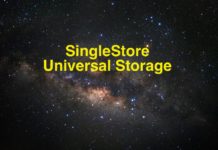Snowflake has lifted the sheets on a dedicated Healthcare and Life Sciences Data Cloud that it claims will fast track the exchange of critical and sensitive health data and speed research.
Few data types spark as much concern around privacy and confidentiality as health data, while health organizations, pharma and medical companies, and public bodies, are all desperate to get their hands on this information for research or planning.
Snowflake says its Healthcare and Life Sciences Data Cloud gives all these stakeholders a single, integrated cross cloud data platform, that will allow them to share and analyze data more productively, while ensuring compliance.
Todd Crosslin, global head of healthcare and life sciences at Snowflake, said one of the biggest challenges when it came to healthcare and life sciences is siloed data – both within and between organizations.
For example, a pharma organization might have teams working on sensitive clinical trial data who need to collaborate with colleagues across the world. Relying on traditional tools like FTP to copy data is unwieldy and problematic when live data is being constantly updated, but also starts raising compliance flags.
“We can really accelerate these things,” said Crosslin. “We know everyone bent over backwards for Operation Warp Speed here in the US and, and around the world for COVID vaccines, but they almost killed themselves doing that.”
Snowflake’s Healthcare and Life Sciences Data Cloud allows the data to be processed into a single set of tables, which researchers can then analyze or share with partners – subject to data residency and other regulations.
Life sciences research is covered by the GxP standards that cover sensitive industries like pharmaceuticals and food. “We cannot be GXP compliant,” said Crosslin. “We can only be compatible. And it’s the global pharma firm that has to say, we have done X, Y and Z, right on Snowflake to be compliant.”
Crosslin was at pains to say Snowflake’s platform wouldn’t replace the high-end storage systems used in, for example, gene sequencing or for AI work. “What we typically find is, then you take the results of that, and you put that back in Snowflake, right to analyze… we appreciate our cousins in different areas that use those types of super high performance storage solutions”








